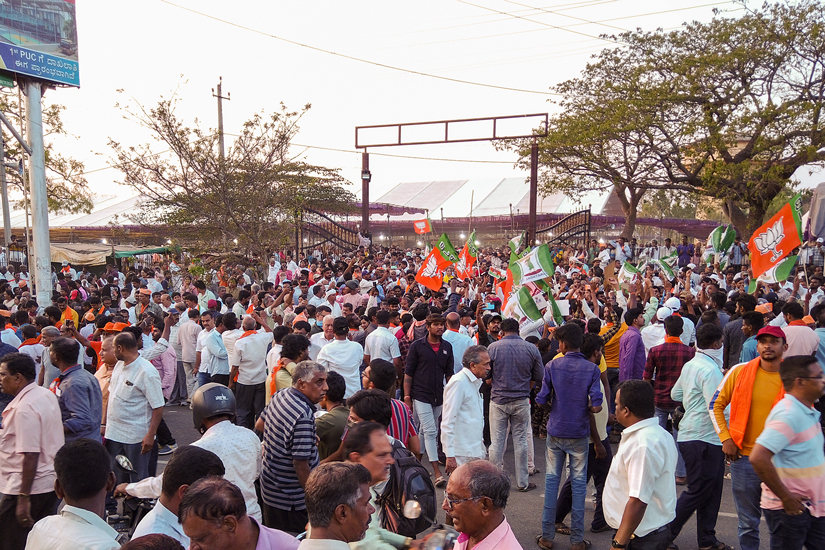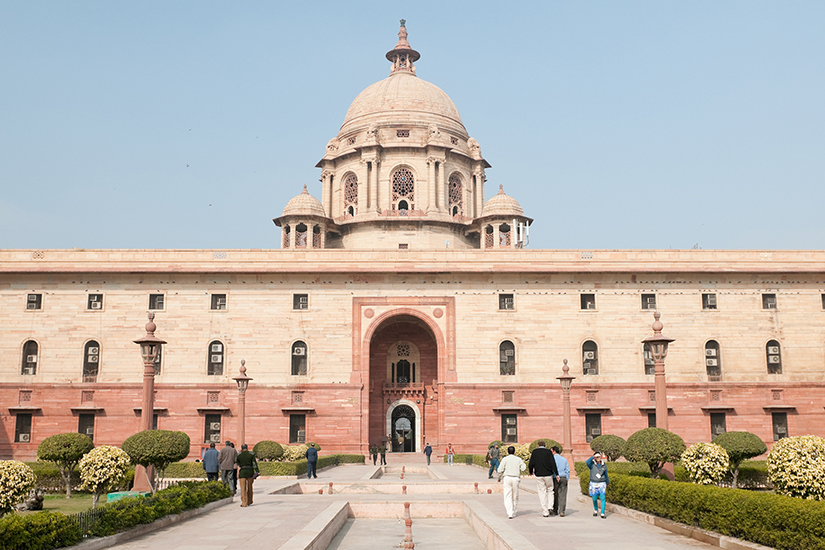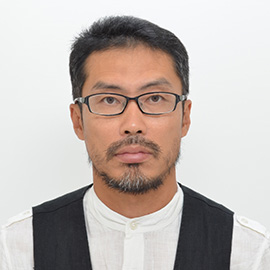No Longer Invincible?
The results of India’s general elections announced on June 4, 2024, were a major setback for Indian Prime Minister Narendra Modi—a politician who had never lost an election. Despite being projected to score an overwhelming victory, his Bharatiya Janata Party (BJP) performed poorly, forcing the party to rely on its coalition partners in the National Democratic Alliance (NDA) to retain a majority.
Until now, Modi’s electoral strength appeared invincible. After being appointed chief minister of Gujarat in 2001, he led the BJP to a majority in the state legislative assembly for three consecutive elections, starting in 2002. He entered national politics in 2014—when the BJP had been in the opposition for 10 years—and led the party to its biggest-ever general-election victory with 282 seats. With Modi as the incumbent prime minister, the BJP topped this feat in the 2019 election, winning 303 seats. In February 2024, just before the start of the latest general election, Modi confidently told parliament that the BJP alone would win at least 370 seats and that the ruling NDA coalition would win over 400 seats.[1] Preelection opinion surveys and exit polls published on the last day of voting also predicted a landslide for the BJP.

I regarded these forecasts with a grain of salt, however, pointing out in numerous publications that elections in India are rarely foregone conclusions and are often unpredictable.[2] Indeed, as campaigning got underway, the biggest issues on voters’ minds were reportedly unemployment and rising prices—topics unfavorable to the Modi administration.[3] Nevertheless, the overriding view was that Modi’s popularity would prevail. He was a charismatic figure intent on fulfilling the dream of the Hindu majority for a strong and ideologically pure “Bharat” (India).[4] In Japan, he has been likened to two memorable prime ministers, having the “man of the people” qualities of Kakuei Tanaka and the persuasiveness of Jun’ichiro Koizumi.
Most projections turned out to be off the mark, as the BJP was deprived of a majority, winning just 240 of 543 seats in the lower house, and falling far short of its achievements in two previous general elections. Even with the help of two coalition partners, the NDA managed just 293 seats—nowhere near the 400 that Modi had predicted. After the returns were announced, Modi appeared at BJP headquarters at night and tried to dispel the gloom by declaring that the NDA had emerged victorious for the third consecutive time.[5] In no way, though, could the results be called a triumph for the BJP.
Why was the contest much closer than expected? One might jump to the conclusion that voter concerns about the economic outlook chipped away at Modi’s popularity. Indeed, according to a post-election survey conducted by the Centre for the Study of Developing Societies (CSDS), 57% of those who voted for opposition candidates cited rising prices and unemployment as the reasons for their choice.[6] However, the BJP’s vote share nationwide was nearly the same as in the previous general election, falling by less than 1%. Thus, the results cannot be said to simply reflect a decline in Modi’s support. The BJP increased its vote share in such southern states as Tamil Nadu, where Modi frequently campaigned, but it failed to win contests there because of the single-seat constituency system. On the other hand, it wound up losing seats and voter share in the biggest states like Uttar Pradesh, where the BJP had been dominant. While circumstances differ from state to state, the strong showing by the opposition parties owes in large part to the marked strengthening of their electoral cooperation and campaign strategy in these large voting districts.
What is noteworthy about the CSDS post-election survey is that 59% of all voters said that they were satisfied with the Modi administration. Although this is around 6% lower than after the previous election, it is still quite a high approval rating. Perhaps more telling is that only 78% of those claiming to be “completely satisfied” with the administration actually voted for the BJP or NDA, and only 51% of those who are “somewhat satisfied” did so.[7] What this suggests is that voters who felt that Modi could have done more over his 10-year tenure turned this time to the opposition. It is entirely plausible that they were uneasy about giving Modi too much free rein, despite being satisfied with his performance overall, and chose to voice their misgivings in the hope of restoring a healthy democracy.

Regional Rumblings
Be that as it may, Modi is the first Indian prime minister to serve three consecutive terms since Jawaharlal Nehru—the country’s first prime minister. Nehru’s daughter, Indira Gandhi, served two terms but faced strong criticism for what many perceived to be authoritarian tactics, such as a declaration of a state of emergency between 1975 and 1977, and wound up losing the 1977 general election.[8] By contrast, Modi managed to remain in power despite concerns about his strongman tendencies.
There is no denying, however, that Modi now finds himself on shakier ground, a far cry from the solid support Nehru enjoyed upon the start of his third term. The BJP has been stripped of its absolute majority and needs its coalition partners more than ever, as losing their support would immediately mean the collapse of government.
Particularly important are the leaders to whom Modi himself made a point of thanking in his victory speech: Chandrababu Naidu, the chief minister of the southern state of Andhra Pradesh and the national president of the Telugu Desam Party (TDP); and Nitish Kumar, the chief minister of the northern state of Bihar and leader of the Janata Dal (United) party. The TDP holds 16 seats in the lower house and the JD(U) holds 12 seats. If both were to defect to the opposition, or if even just one were to distance itself from the coalition by joining another party or a fringe faction within the BJP, the government would be unable to survive a no-confidence vote.
Such developments are not without precedent in Indian politics. Nitish Kumar, in particular, has a history of being quite fickle, having been part of the opposition when Modi began his first term but later joining the coalition, only to then leave the alliance before returning once again to the NDA.
If Modi and the BJP wish to complete their five-year term, they must confront this harsh political reality. This will mean having an open ear to the demands of the regional parties within the NDA, negotiating with them in good faith, and accommodating their wishes to a certain extent. Having gained leverage over the BJP following the election, the TDP and JD(U) immediately demanded ministerial posts and economic assistance for their respective regions.[9]
Modi himself is fully aware of the new dynamics and emphasized the importance of running the government through “consensus.”[10] Coordinating disparate views and building consensus will be unfamiliar tasks for Modi, however, as he has ruled in a top-down manner on the strength of an absolute BJP majority since his days as Gujarat chief minister. None in his inner circle except for Defence Minister Rajnath Singh, moreover, were part of the BJP-centered coalition government between 1998 and 2004. The survival of the current government will thus hinge on whether Modi himself can changes his political style—and there is no telling whether he has the will and ability to do so.

How Will the NDA Relate with the West?
Modi’s shaky political base may force delays in the economic reforms and improvements in the investment environment that had been sought by many Western countries, including members of the Quadrilateral Security Dialogue (Quad). And this could, in turn, slow Modi’s efforts to develop the country’s manufacturing sector and strengthen the supply chain.
Yet, the reaction in the United States and Europe has been generally positive, with the Economist calling the election results a “triumph for Indian democracy.”[11]This reflects increasing concerns—despite welcoming the continuation of Modi’s commitment to the Quad and cooperation with the West—about a potential slide toward autocracy and the rise of Hindu nationalism, which marked Modi’s second term. The West has grown uncomfortable with India’s overtly anti-Islamic policies, such as the revocation of Kashmir’s autonomy, the enactment and enforcement of the much-criticized Citizenship Amendment Act, and the construction of a Hindu Ram temple on the ruins of a historic mosque in Ayodhya, and its ruthless crackdown of opposition parties and the media protesting such policies. India is also accused of killing or plotting to kill separatists whom it labeled “terrorists” on foreign soil, including in the United States and Canada. Thus, for many Western countries, the election results were seen as preventing Modi’s authoritarian tendencies from going too far.[12]
Whether Modi will temper his Hindu nationalist vision remains to be seen, however.[13] If he seeks to achieve the government’s Viksit Bharat (Developed India) ambitions to transform the country into a developed entity by the centenary of its independence, as he had advocated during the campaign, he will need to strengthen cooperation with the industrial democracies, including Japan. Other countries that also wish to see a “Developed India” that values freedom and democracy must, correspondingly, engage with India in ways that encourage such developments.
(2024/07/09)
Notes
- 1 Nistula Hebbar, “BJP alone will get at least 370 seats and NDA will cross the 400-seat mark: PM Modi,” The Hindu, February 6, 2024.
- 2 Examples (in Japanese) include my articles and comments in the April 21, 2024, issue of the Shinano Mainichi Shimbun, the May 29, 2024, post on the Shu Play News website, and the July 2024 issue Sekai.
- 3 According to a public opinion poll conducted by the Centre for the Study of Developing Societies just before the first phase of voting in April, 27% of respondents cited unemployment and 23% cited rising prices as the most important issue in the general election, accounting for half of the total. In contrast, just 10% cited Hindu supremacy and the controversial consecration ceremony in January 2024 for the Ram temple at Ayodhya led by Prime Minister Modi, and only 2% chose improvements in India’s international image. Sanjay Kumar and Nirmanyu Chouhan, “CSDS-Lokniti 2024 pre-poll survey; Issues that are likely to dominate the Lok Sabha election,” The Hindu, April 11, 2024.
- 4 “CSDS-Lokniti 2024 pre-poll survey; BJP has an edge, but a tough fight is possible,” The Hindu, April 13, 2024.
- 5 Narendra Modi, “PM Modi addresses Party Karyakartas at BJP HQ after NDA win in 2024 Lok Sabha Elections,” June 4, 2024.
- 6 Devesh Kumar and Rishikesh Yadav, “CSDS-Lokniti post-poll survey: Despite discontent NDA given another chance,” The Hindu, June 6, 2024.
- 7 Vibha Attri and Naman Jaju, “CSDS-Lokniti post-poll survey: Evaluating government’s performance and its impact on voting patterns,” The Hindu, June 6, 2024.
- 8 Indira Gandhi returned to power to serve her third term as prime minister after winning the next general election in 1980.
- 9 Ajoy Ashirwad Mahaprashasta, “BJP’s Internal Rumblings, Naidu-Nitish Pushback on UCC, Agniver and ‘Special Status’ Challenge Modi,” The Wire, June 6, 2024.
- 10 Neelam Pandey and Shanker Arnimesh “Consensus key to run govt, Modi says at NDA meet. Naidu, Nitish bat for ‘regional aspirations,’” The Print, June 7, 2024.
- 11 “A triumph for Indian democracy,” The Economist, June 5, 2024.
- 12 Kazuki Minato, “Modi-ka” suru Indo: Taikoku genso ga umidashita ken’i shugi, Chuokoron Shinsha, 2024.
- 13 Christophe Jaffrelot, “The roads to India’s redemocratisation, the challenges,” The Hindu, June 6, 2024; Siddharth Varadarajan, “ Modi Stands Defeated But He’s Not Giving Up His Destructive Plan for a 1000-Year-Reich,” The Wire, June 6,2024.

